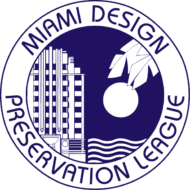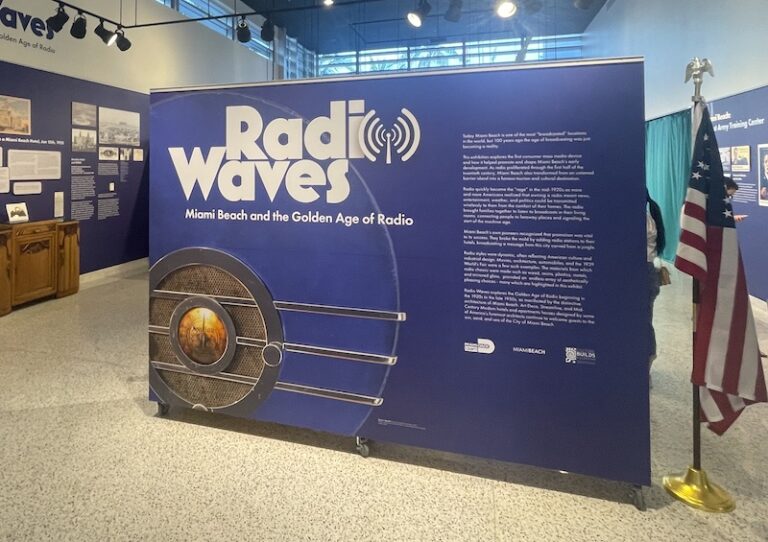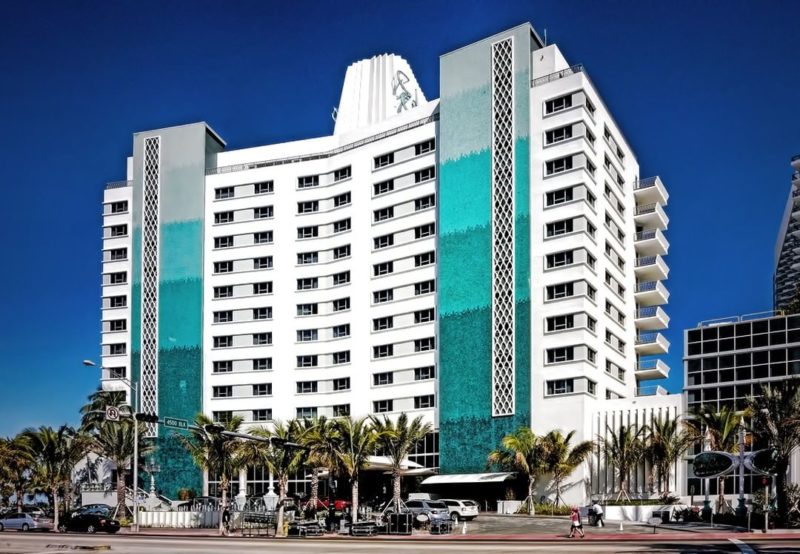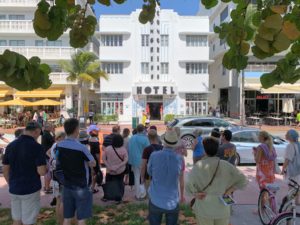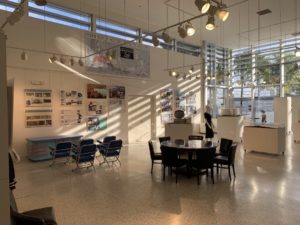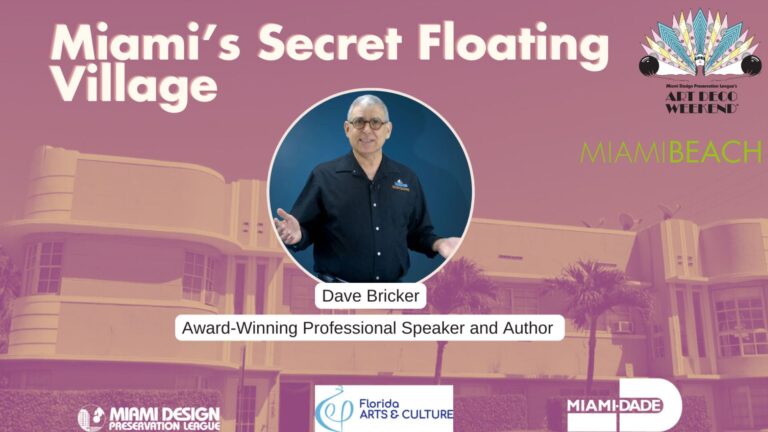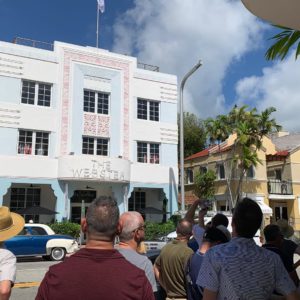by Robin Grow, Vice-President, ICADS and President, Art Deco and Modernism Society of Australia


A regular highlight (and a major Initiative) of ICADS activities for the last three decades has been the conduct of the World Congress on Art Deco. Congresses take us to places that boast extensive collections of Art Deco buildings and a local Art Deco Society and have taken us to many wonderful cities, where we have enjoyed the hospitality of hosts, meeting up with old friends and making new acquaintances from the community of Deco-lovers.
The format of Congresses is similar – spread over 4-5 days, with an opening reception, lectures/presentations, walking or bus tours of districts that boast many Art Deco buildings, social events (including a gala final event), and a meeting of ICADS Board. Lectures and presentations cover buildings and precincts, designers, furnishings, interiors, trends, societal changes, entertainers, etc, often with emphasis on Art Deco of the host country. Presentations have been provided by many well-credentialled professionals, architects, designers, authors, academics, curators, historians and enthusiastic lovers of the style.
Speakers have been generally erudite and entertaining, providing insights into local design. A pleasing aspect of recent presentations is the ability to listen in multiple languages.
There is plenty of time for socializing, with lunches and dinners in Deco-styled venues.
It all started in Miami Beach, Florida, where the Miami Design Preservation League (MDPL) began its activities in 1976. The first Congress was held there in 1991 and was the brainchild of Barbara Capitman, largely responsible for establishing MDPL and fighting to preserve South Beach from the wrecking ball. MDPL had the idea of gathering supporters from around the world, promoting education of the value of preserving Art Deco’s heritage, and setting up systems of support to fight against buildings threatened with demolition or inappropriate redevelopment.
The intention of Congresses was that they be located in cities and countries that were known as centres of Deco design. The rights to the name World Congress reside with Miami Design Preservation League and each host city enters into a contract with them. Each is generally attended by 100 to 150 delegates.
Congresses have taken place in 10 countries, spread over all the continents. They bring together members of societies and lovers of Art Deco from around the world every two years, with some lifelong friendships made – even if we only meet every two years.
The Congresses are great learning events and celebrate many aspects and regional varieties of 20th-century design.
One of the joys of Congresses is that we can often gain entry to buildings that are normally difficult to access. The Congresses have also enabled delegates to see the work of prominent architects, such as Frank Lloyd Wright, Oscar Niemeyer, Francesco Salamone, Morris Lapidus, Laslo Hudec, and many more.
ICADS SPREADS ITS WINGS
The second Congress was held in Perth, Western Australia, in 1993, with multiple presentations and a series of bus tours, and the third held in 1995 in England in Brighton and London. Highlights included visits to buildings in central London, such as Unilever House, the Daily Express, and the Savoy Theatre as well as a visit to the De La Warr Pavilion
It is pleasing that there is now a very active Art Deco Society in the United Kingdom and the European connection will be resumed in 2025 with the Congress in Paris, when we will celebrate a century since the 1925 Exposition
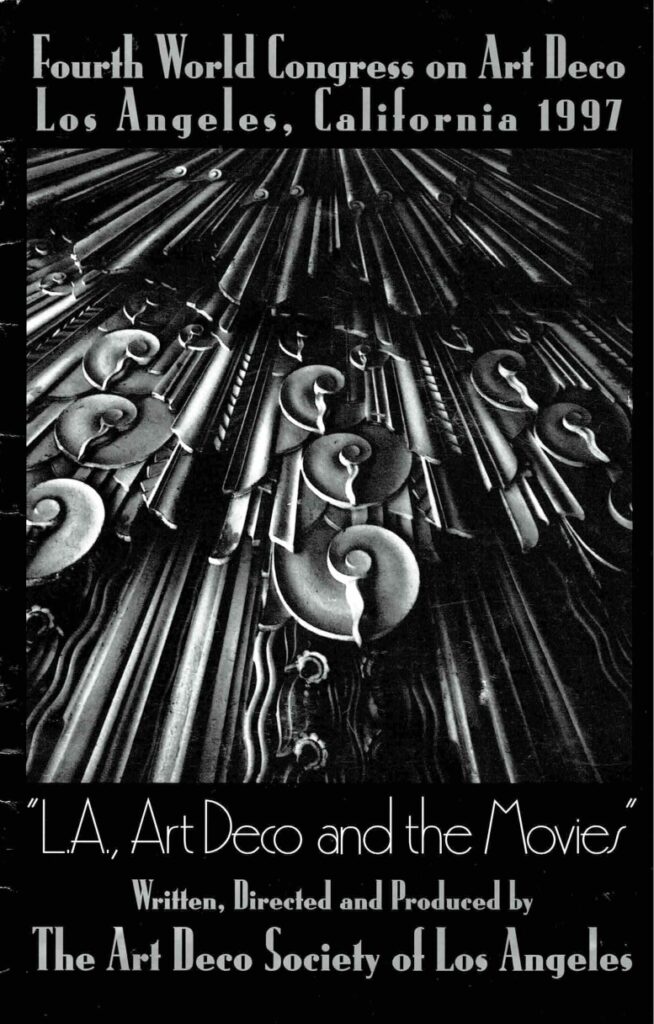
Some Congresses are based on themes, such as Los Angeles in 1997, where the theme was “Art Deco, Los Angeles and the Movies”. A highlight was an address by Fay Wray, the actor who played opposite King Kong in the famous 1931 film, and a visit to the Pantages Theatre in Hollywood, home of the Academy Awards in years from 1949 to 1959. Another themed Congress was held in Napier, New Zealand in 1999. With a theme of “Art Deco on the Edge of the World”, it celebrated the re-building of Napier in Art Deco style after an earthquake and fire in 1931, and the creation of a new suburb called Marewa.
The only Congress held in Africa was in Cape Town in 2003. It was a bit confronting, as the country was still experiencing major political and social change. Opening events at Congresses are joyful occasions – catching up with old friends, meeting new friends, generally in a stylish Deco location. The welcome event at Cape Town took place at a restored Insurance Company building that is adorned with images of African tribal chiefs
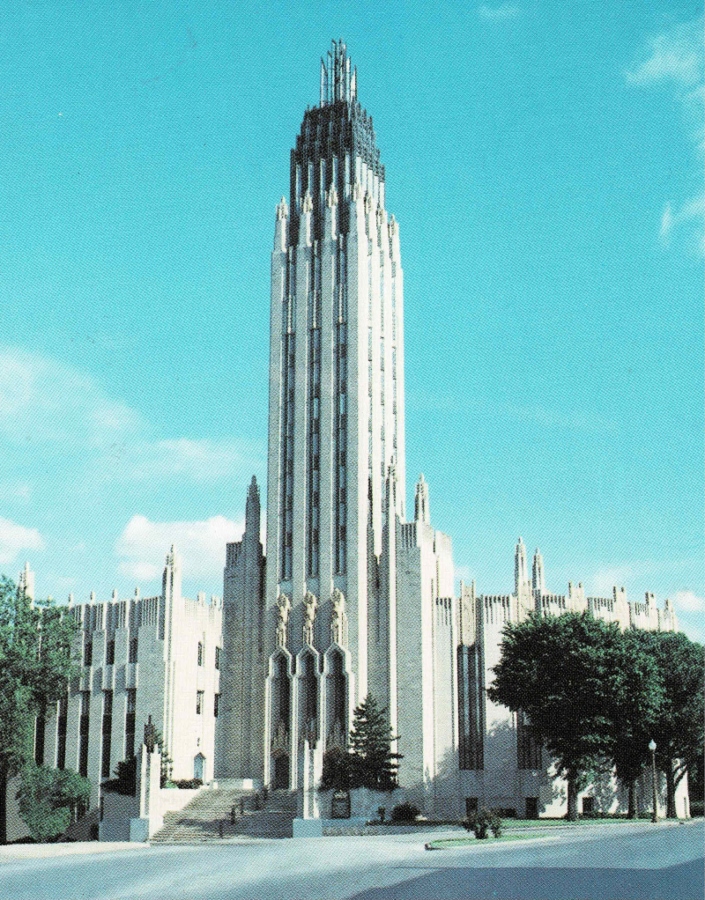
North America has hosted six Congresses – Miami (1991), Los Angeles (1997), Tulsa (2001), Cleveland (2017). Tulsa was oil-rich in the 1930s and contains many wonderfully preserved and maintained buildings. At the 2001 Tulsa Congress, we visited three buildings by Frank Lloyd Wright in one day (including the Price Tower), together with First Baptist Church Tulsa.
And of course, New York (2005), where we enjoyed visiting highlights such as the Chrysler Building, Empire State Building, Rockefeller Centre, as well as walking tours of Manhattan, Central Park West, and the Bronx, where we visited the Bronx Zoo with its wonderful “Rainey Gates” by Paul Manship.
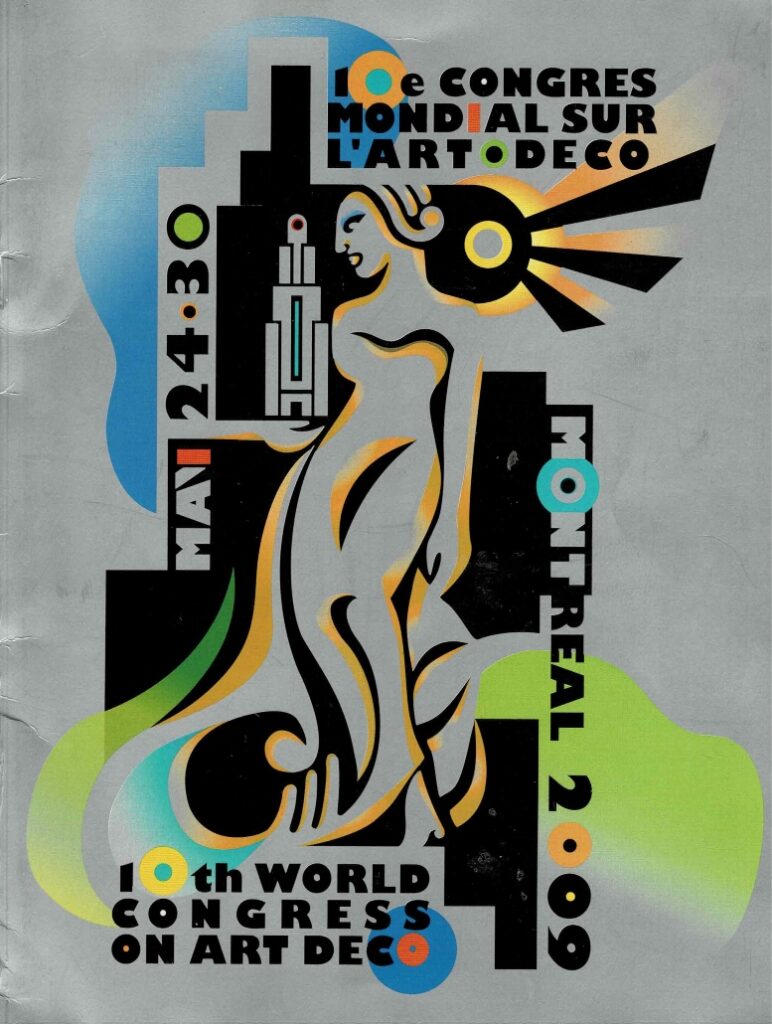
Still in North America, in 2009 the Congress was held in Montreal Canada. Centred at McGill University, highlights included a walking tour of old Montreal and visits to a series of exquisite church buildings in the style known as Bellotism, a form of ecclesiastical Art Deco unique to Quebec outside of Europe and typified by churches such as Eglise St. Jean Berchmans.

Australia has been a major contributor to the success of Congresses and ADMSA has been represented at most Congresses, often with a large contingent. Following a Pre-Congress event in Sydney, Melbourne hosted the 2007 Congress, regarded as very successful, with visits to city central department stores, schools, hotels, apartments, churches, houses in Dandenong Ranges, cinemas, town halls and a wonderful dinner-dance (with a big band!) at the Ivanhoe Centre. Most importantly, the presentations included an emphasis on preservation, with an entire day devoted to these issues, which are now a regular part of the Congress agenda.
In 2011, a major change in the Congresses took place with the first Congress in South America, when the exciting city of Rio de Janeiro in Brazil was the venue. Our host was Marcio Roiter, who founded the Brazilian Art Deco Institute in 2005. Highlights included Copacabana beach, Ipanema, Saint John Fort, visits to Sugar Loaf and Corcovado, home of Christ the Redeemer statue – the largest Art Deco monument in the world. It followed a pre-Congress in Sao Paulo.

Rio was followed in 2013 by Havana, Cuba. It represented the culmination of an eight-year battle by some ICADS members to visit Cuba – for US citizens, this meant overcoming the conditions imposed by the US government on visiting Cuba. Havana boasted arguably the most deco buildings in any city we have seen. We stayed in the Nacional Hotel (1930) with its rich history of movie stars and gangsters from the pre-Castro era, and also enjoyed cabaret and the local music (together with mojitos and caipirinhas!) We enjoyed visiting buildings such as the Edificio Solimar, (1944), with a fantastic finish of curved rhythmic balconies, and Edificio Bacardi – an Art Deco classic that remains in place today. At the time of construction in 1930, it was the tallest building in central Havana.

The design includes a stepped tower (with a Babylonian ziggurat) above a block base, a chromatic exterior, and a bronze figure of the Bacardi bat atop a sphere from where it looks out over Old Havana. Delegates also enjoyed the exquisite sunroom at the house of Catalina Laza, reputedly the most beautiful woman in Cuba at the time. One result of the Congress in Cuba was a lot of positive publicity and the raising of awareness of the need to preserve Art Deco and Modernist buildings, particularly in a country where obtaining materials is very difficult.
The Congress spread its wings even wider in 2015 when it moved to China. Shanghai was the host city, with a pre-Congress in Beijing and a post- in Nanjing. We enjoyed being educated in the rich world of Chinese culture from the interwar years as well as visits to prominent places in Shanghai such as the Peace Hotel and the Grand Cinema, some large Deco department stores from the early 1930s in Nanjing Road East, many apartment blocks and some stand-out Deco mansions, such as the Pei Mansion, which was built in 1934, and is now an hotel. Two memorable buildings were the former headquarters of the Chinese Aviation Society, designed in the shape of an aeroplane and now a hospital, and a former vast concrete abattoir from 1933 which has been converted to house a range of boutiques, art galleries and workshops, and restaurants. They demonstrate the effectiveness of adaptive re-use of 1930s buildings, something that is dear to our hearts.
In 2019 the Congress returned to South America and was held in Buenos Aires, Argentina. Highlights included visits to the Kavanagh Building, the Automobile Club and Recoleta Cemetery.
ORGANIZING CONGRESSES
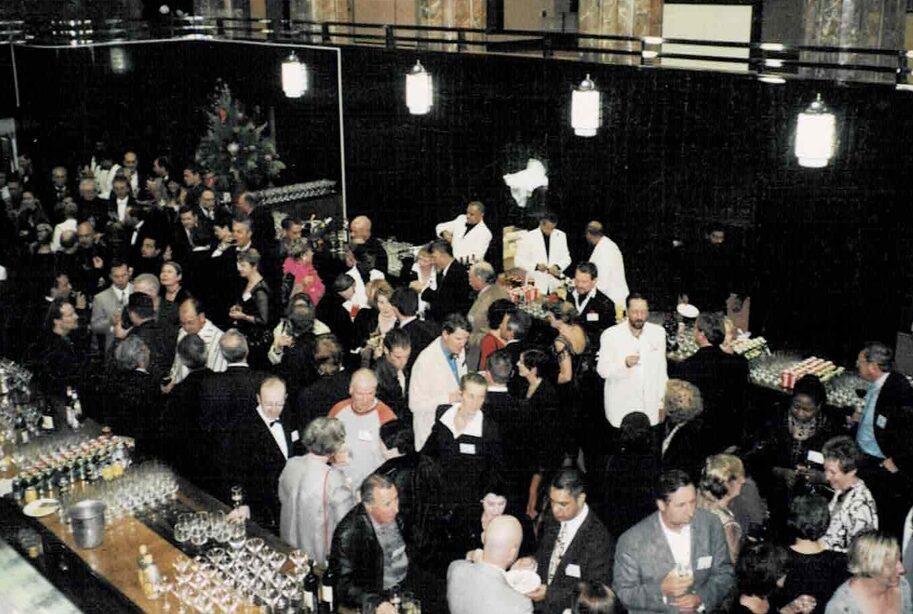
Congresses are generally organised by the Society based in the host city, generally resulting in an outstanding job. The key to successful Congresses is to have a well-organized team of volunteers, such as THE RELIABILITY TEAM at the Melbourne Congress.
It has certainly become a lot easier due to modern communications – early Congresses were organised without the use of the Net, email, credit cards, digital photography, and mobile phone messaging! We relied on writing letters and fax machines and visitors from overseas had to bring cash and Travellers Cheques. We have certainly come a long way!
Tribute must go to Geo Darder and Copperbridge Foundation, who worked with Gustavo Lopez from the Havana Society to organize the Cuba Congress in 2013. In 2019, at a time of crisis for ICADS, Geo stepped in (assisted by locals such as Fabio Grementieri) to organize the Buenos Aires Congress, which turned out to be a huge success.
